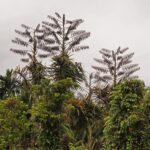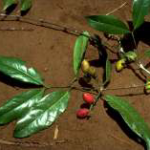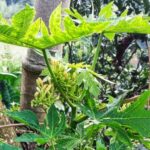Elaeis guineensis (Arecaceae); Common names Ba di nsamba, ba di ngasi (Kongo), palmier à huile (Fr.), oil palm
Ecology
In Kongo Central scattered trees are commonly left in the bush fallow.
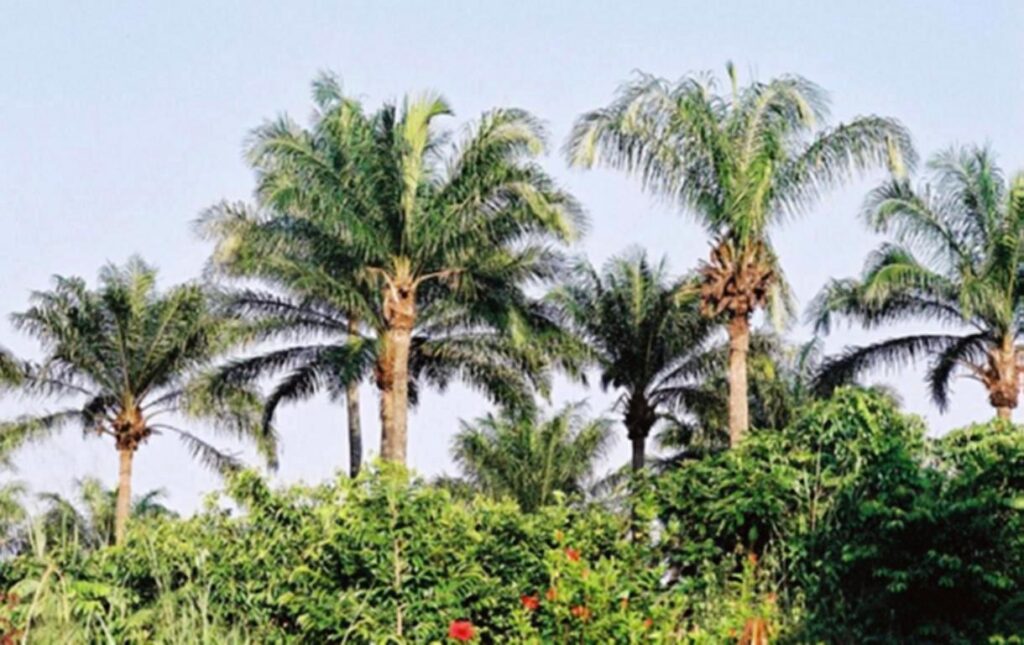
Propagation
Seed requires heat treatment before it will germinate and even then is slow and variable. It is best to use pre-germinated seed from improved Tenera types.
Management
Cultivated palms commence bearing after 4 years and reach their peak after 12 – 15 years. They may continue producing for 40 to 50 years. Wild plants may take 10 years to start fruiting. Inter-cropping with cassava, soya beans or sesame for the first 29 months makes good use of the land. If leguminous crops are grown, the palms will benefit from the improved fertility and subsequent yields of oil are likely to be increased.
Uses
In Kongo Central the fruits are a source of cooking oil and an important cash income. The fruits are first boiled then pressed as seen in the photo.
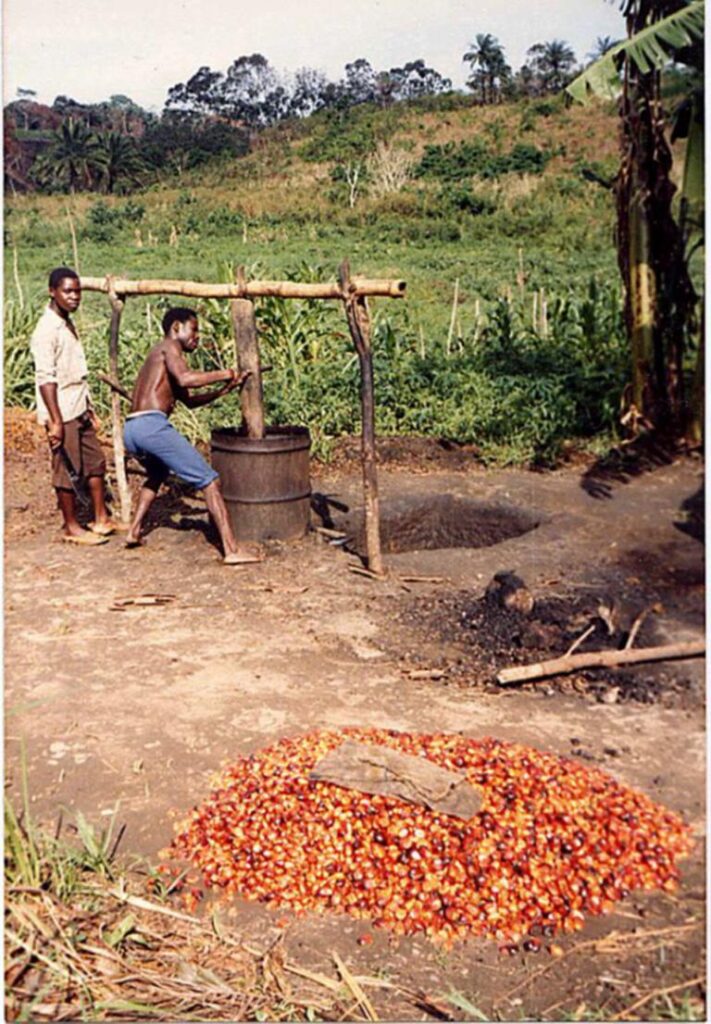
Red palm oil is important as a local food and for cooking, supplying fat in areas where cattle cannot be kept due to tsetse fly. It is a good source of vitamin A. The slightly unripe fruit is cooked over ashes to produce a delicacy. Sap is also collected for toddy making. The male flowers are an important pollen source for honeybees. The trunk, which is neither strong nor lasting and is readily attacked by termites, is often used for building poles, rafters, bridges, fences and even for fuel wood.
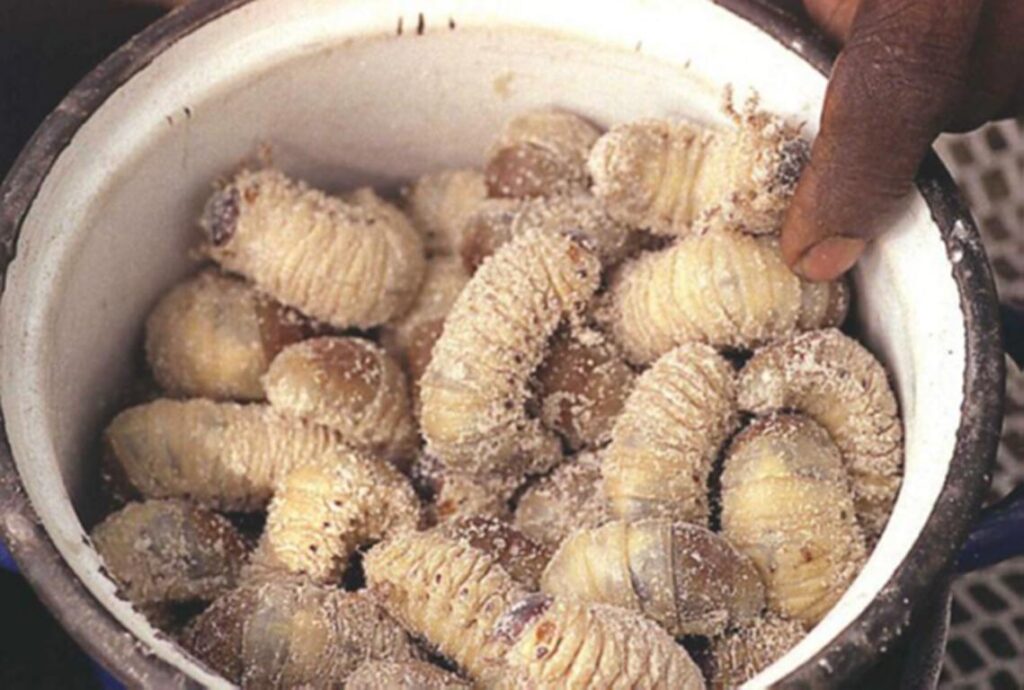
Nsombé (palm worms = Oryctes spp.) are collected from the decaying trunk and fed on cassava meal for a few days before being cooked and eaten.
The terminal bud provides the hearts of palm, a much appreciated vegetable with an artichoke–like flavour.
Cracking the seed shells is a laborious task but the shells are highly valued for fuel as they give out a considerable heat, and are therefore much favoured by blacksmiths. The dry flowers are used for kindling. They were also burnt and the ash soaked in hot water which was then used as a salt substitute.
Building material
The leaves are used for thatching, matting, and making walls and fences, but their removal reduces fruit yield. The midrib is used for house building, making baskets (ntete), traps, beds etc.
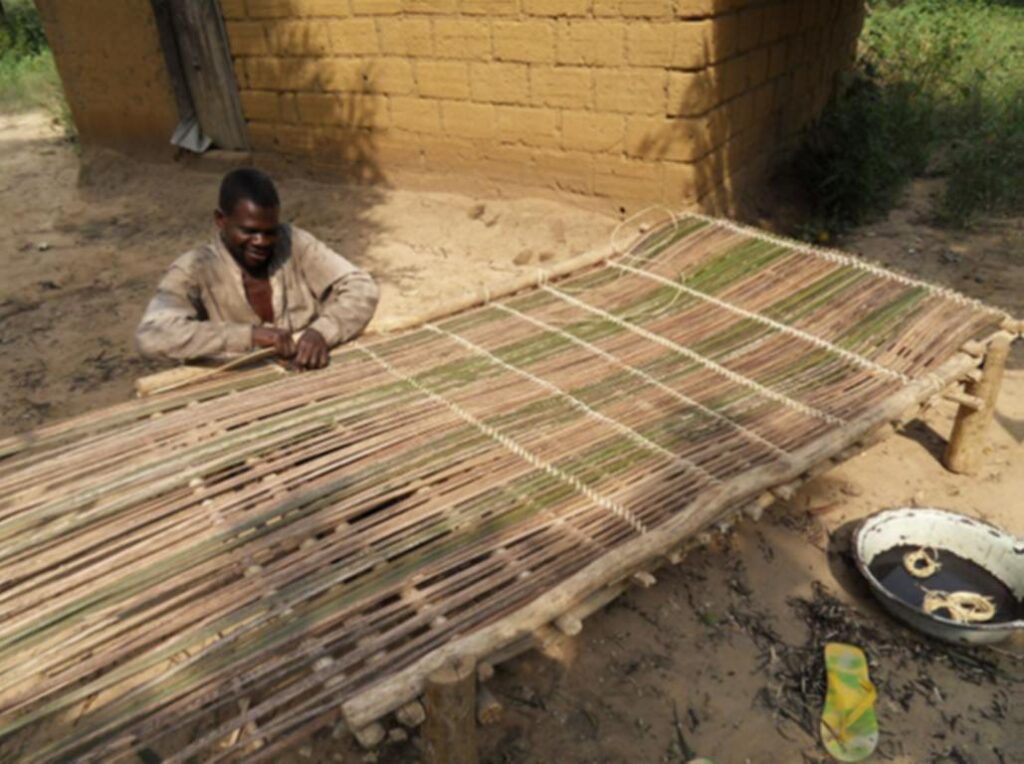
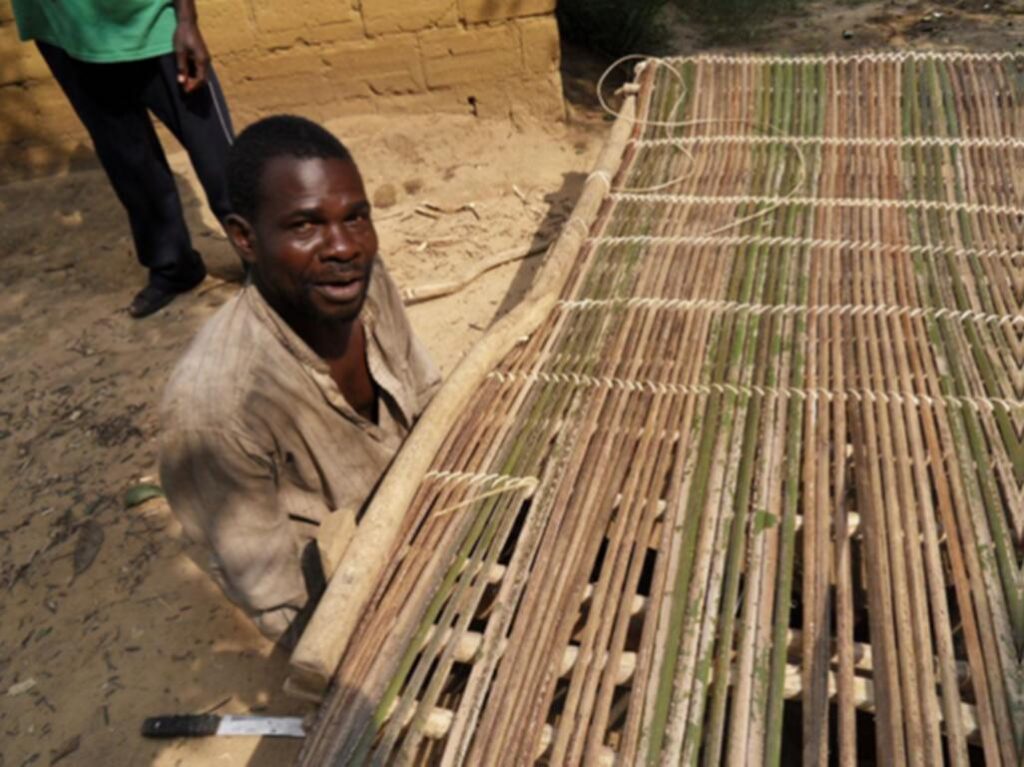
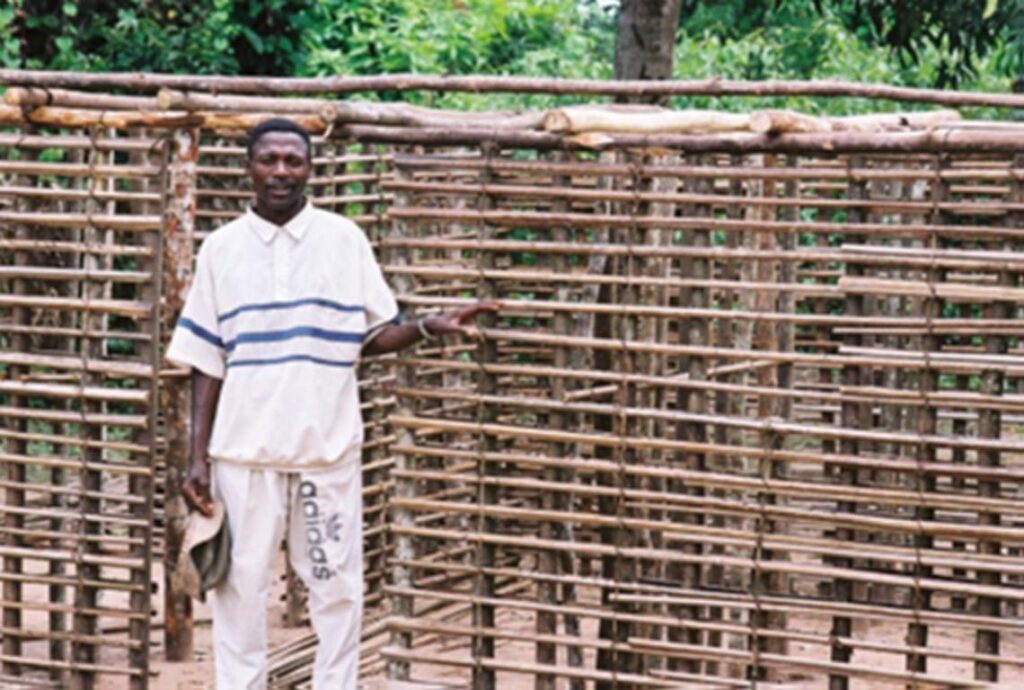
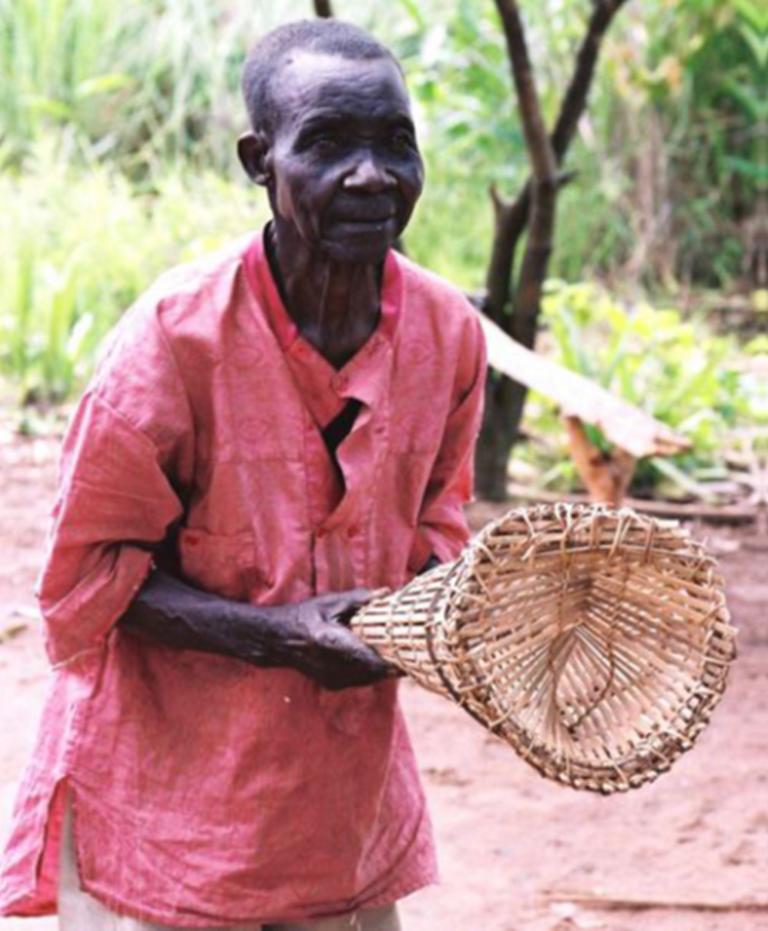
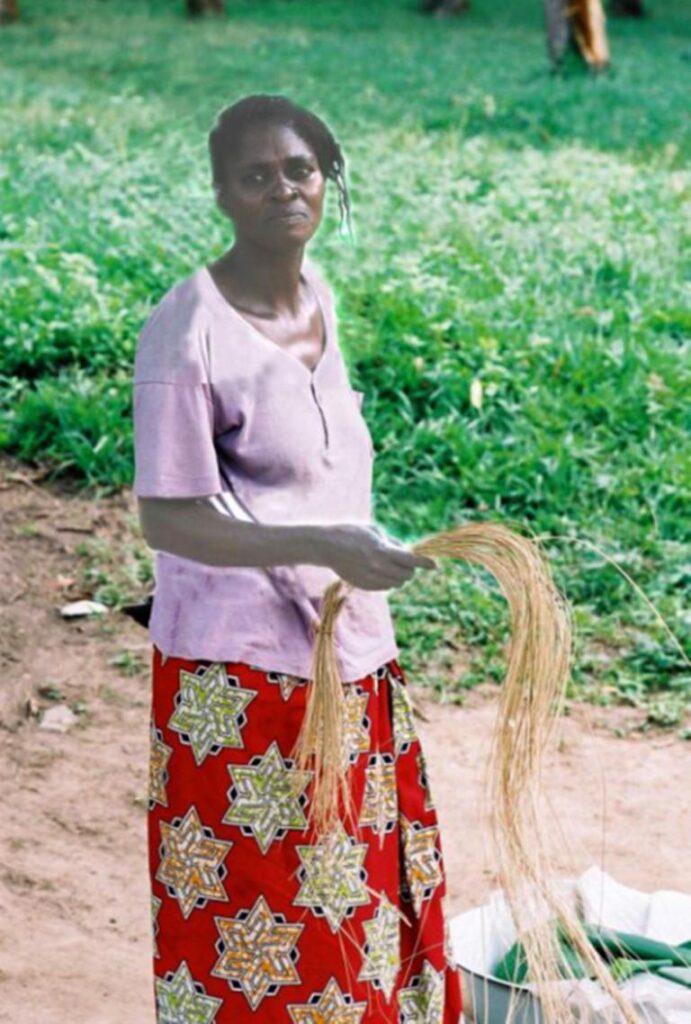
Raising mushrooms
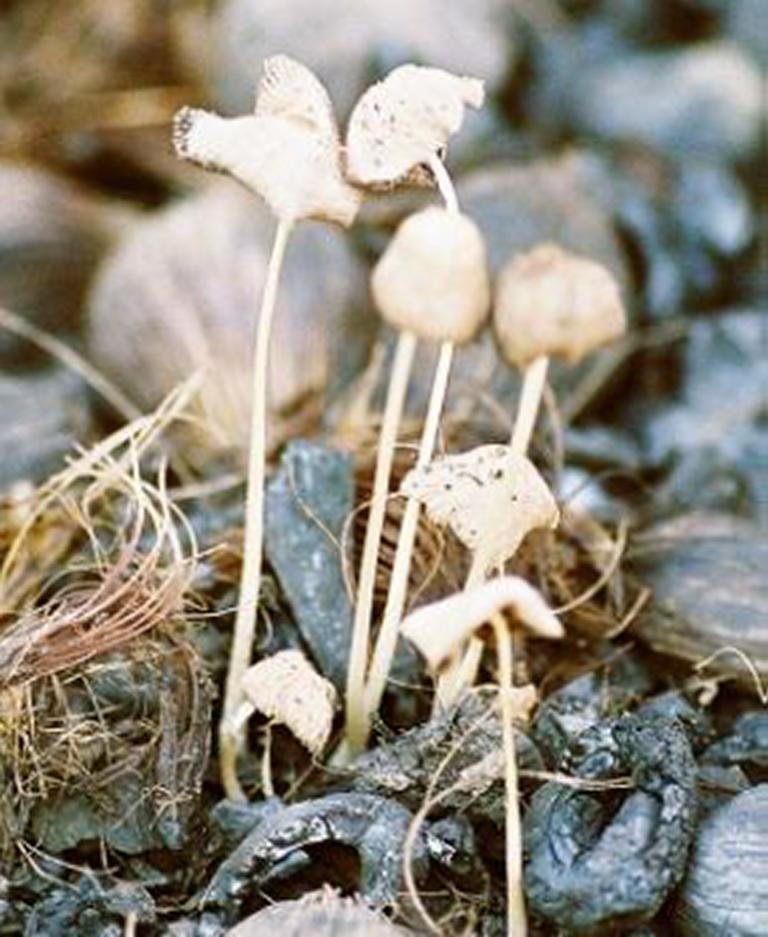
Edible mushrooms (Lumiengi = Psathyrella cf. tuberculata) are grown on the dead flowers which are heaped together and covered with palm leaves. Palm wine is then poured over the heap and the mushrooms are produced after 2 – 3 days.
References
Gillet & Pâque 1910, Godin & Spensely 1971, Castagné 1983, Daeleman & Pauwels 1983, Crane et al. 1984, Ambougou 1991, Burkill 1994, Raemaekers 2001, Kibungu Kembelo 2010
_______________________________________________________________________________
Text and all photos at this article © Paul Letham and Augustin Konda ku Mbuta. Professional background and contact information of the authors of this article, can be found here.
.



